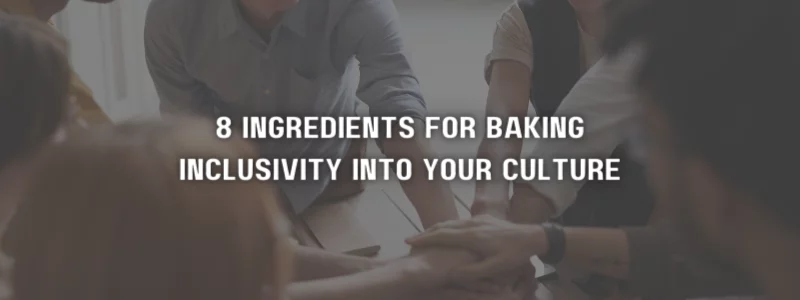Last Updated on January 31, 2025
Inclusivity and diversity aren’t just about who you hire — it’s about the culture you create.
Sure, you can get talent from all walks of life, but if you haven’t built an inclusive culture…
Well, good luck getting them to stick around.
On this show, we’re speaking with Deidre Diamond, Founder and CEO at CyberSN, who shares her 8-step framework for creating an inclusive culture in your organization.
Join us as we discuss each step, including:
-
The need for emotionally intelligent managers
-
The power of positivity
-
The art of win-win communication
Let’s walk through this 8-step framework.
8 Steps to Create an Inclusive Culture
Deidre and her team have identified these 8 factors as the keys to creating a truly inclusive culture in your organization.
1. Emotionally Intelligent Managers
Before you say, “that sounds dangerous,” know that it is. And hopefully everybody gains these skills and becomes dangerous, because that’s what the workplace needs. Dangerously skilled individuals who can make change.
Emotional intelligence, or EQ (Emotional Quotient) is the capacity to be aware of, control, and express one’s emotions, in order to handle interpersonal relationships.
If someone is going to be in charge of somebody else’s career, which all managers are, they need to be trained on emotional intelligence skills.
2. Positive Attitude Culture
A positive attitude culture, while it sounds fluffy, is incredibly serious. As a manager, your attitude impacts everybody’s daily performance. You can turn them on or off like a light switch.
And without an overall focus on positive attitude, a culture can’t adequately support high EQ, high empathy, high engagement of relationship, and care of people.
“If we don’t have a positive attitude — a solution-provider attitude — then our culture is never going to be the type that allows for high EQ, empathy and caring for people.” — Deidre Diamond
3. Self-Care Culture
That old saying is true. It’s hard to pour from an empty cup.
If we’ve learned anything from the past two years of this COVID-19 pandemic, it’s the importance of self-care.
We need our health to continue caring for others and doing what we do, whether at work or at home.
4. Kindness, Kindness, Kindness
Everybody thinks they have a culture of kindness. Nobody would say, “we’re not really into kindness in our company.”
But it’s harder to put into practice than one might think.
Think of the phrase, “Kiss, kick, push.”
Even when you have to confront somebody in a challenging situation, you should always start the conversation with something that is kind.
If you start off the conversation immediately with what went wrong, you’re less likely to get the response that you want that would lead to positive change.
5. Consistent Management Training
It takes seven years to develop a new habit, and that includes new patterns in the way that we deal with others. Whether it’s the way we speak or interact with others, we want our EQ skills to be a habit.
“Much like our hard skills, our soft skills need training — and it needs to be consistent.” — Deidre Diamond
So that means coaching and training. Because these aren’t things that come naturally to most of us.
6. Roles & Responsibilities are Clearly Defined & Measurable
This is the number one problem almost every time there’s a conflict.
It almost always boils down to unclear or undefined roles and responsibilities. One person thought it was someone else’s job, or vice versa.
7. Transparent Career Promotion Criteria
If it isn’t written down, it doesn’t exist.
This is why it’s so crucial to make measurable agreements with your boss, and have them written down to use in every one-on-one meeting.
“Let’s create inclusive environments to have high retention — so that we can retain everybody.” — Deidre Diamond
And when they change, and they will, do change management on them. Document those changes and update them as needed.
8. Win-Win Communication
The reality is, not everybody is going to get what they want all the time.
But you have to have the ability to work with your teams, and communicate in such a way that even when someone doesn’t get what they want, they still feel like it was a net positive.
It’s the art of listening.
This episode covers a lot of ground. So if you want to hear the rest, it’s well worth listening to the entire interview.
To hear this episode, and many more like it, you can subscribe to The Virtual CISO Podcast here.
If you don’t use Apple Podcasts, you can find all our episodes here.
Listening on a desktop & can’t see the links? Just search for The Virtual CISO Podcast in your favorite podcast player.























